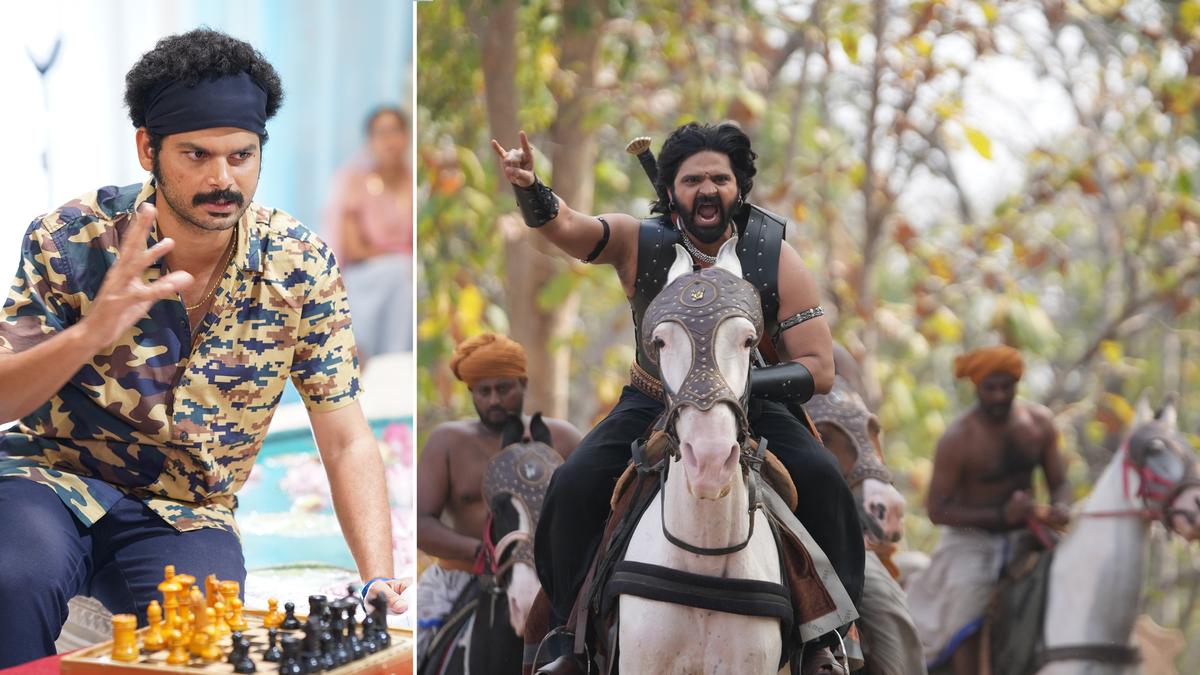Imagine an ancient kingdom that had a matrilineal society, with a queen calling the shots and male heirs being frowned upon. Somewhere down the line, the gender equation is shaken up by a man, marking the beginning of a patrilineal society and patriarchal norms. Hasith Goli, writer and director of Telugu film Swag, which releases in theatres on October 4, explores this hypothetical idea through characters played by Sree Vishnu, Ritu Varma, Meera Jasmine, Daksha Nagarkar and Sharanya Pradeep across different timelines.
Since the teaser and trailer of Swag indicate an out-of-the-box narrative, it becomes imperative to ask Hasith Goli what triggered the story. Taking time off for this interview amid post-production work, Hasith explains, “Going by the voices that speak up for gender equality on social media, we tend to think we are moving towards a more progressive society. Away from social media, we realise that gender disparity is widely prevalent. This was one of the observations that triggered Swag. There were a few other factors, but to discuss them before the film’s release might be a spoiler.”
Swag is Hasith’s second directorial venture after the comedy-drama Raja Raja Chora (2021). Collaborating again with Sree Vishnu, he was convinced that Sree Vishnu could pull off varied characters in different period settings. Gender issues might anchor the narrative, but Hasith wanted to make an entertaining, non-preachy film.
Ritu Varma and Hasith Goli during the making of ‘Swag’
| Photo Credit:
Special Arrangement
“When we ask someone about their lineage, they invariably talk about their father, uncles and grandfather and not their mother and grandmother. Though we have given pitru devathalu (departed ancestors) a male connotation, I gathered that the original idea of the term was not limited to men,” Hasith explains, adding, “A few pockets of Kerala and Assam continue to have matrilineal societies. I have also read about ancient cultures where women were the heads of the clans and made important decisions. It made me wonder how and when things changed.”

Absolute power corrupts
In the film, Ritu Varma as queen Rukmini Devi represents the female-dominant Vinjamara Vamsam while Sree Vishnu plays a chauvinistic Bhavabhuti Maharaja. “Be it male or female, when great power is given to someone for a long time, they become domineering. We explore serious emotions but I also wanted the drama to evoke fun. All the kingdoms and dynasties mentioned in the story are fictional.”
For the present-day scenario as well, Hasith preferred an unspecified urban city. Some production designs pertaining to the 1970s, ‘80s and ‘90s were period-specific, while for others, creative liberties were taken.
Hasith says that some female characters, including Ritu Varma, Meera Jasmine and Sharanya Pradeep are present in the king’s era as well as in the present; Daksha plays a character paired opposite one of the characters played by Sree Vishnu called Singareni, a wannabe influencer.
Hasith is eager to see how the audience will respond to Meera Jasmine, who will be seen in a Telugu film after a decade. “Meera ma’am will be a highlight of the film. She can speak through her emotions effortlessly,” he says. Initially, it was not easy to get in touch with her. But once he got through and gave her a three-hour narration, she was eager to be a part of Swag. Meera, like several other actors in the film, dubbed for her part.

Several characters and timelines
A part of Hasith’s task was to delineate the characters across timelines and give them distinctive traits. In the case of Ritu Varma, as the contemporary urban woman Anubhuti, Hasith wanted her to be a confident, tomboyish independent woman who sports tattoos but also displays a wannabe attitude in her urge to be a staunch feminist.
Hasith Goli and Meera Jasmine on the sets of ‘Swag’
Given the number of characters and the possible backstories that define them, how did Hasith try to convey all that he wants to in a concise manner? “It happens organically,” he says. Once he finishes writing, he shares the script with his friends, both men and women, and gauges their reactions before fine-tuning it. He also has discussions with the editor, music composer and the cinematographer. “They are my first audience,” he adds.
For Swag, Hasith is collaborating again with cinematographer Vedaraman Sankaran and music composer Vivek Sagar. He mentions Vedaraman’s eye for detail and ability to deliver a slick output within a limited budget as he did with Raja Raja Chora. This time, Hasith and he worked on a distinct visual tone for each timeline.
As for Vivek Sagar, also referred to as ‘swara swagger’ by music buffs, Hasith says, “He justifies that title through his music. He combines unusual instrumentation and compositions. For instance, he used a western-tone voice for a veena composition.”
It has been a few years since Hasith, an alumnus of BIT Pilani, gave up his corporate job to work with director Vivek Athreya before branching out on his own. Taking stock of his journey, he says, “It was my decision to enter cinema, fully aware that nothing will be offered to me on a platter. So I do not complain. I have a long way to go as a filmmaker.”
Published – October 01, 2024 02:59 pm IST










